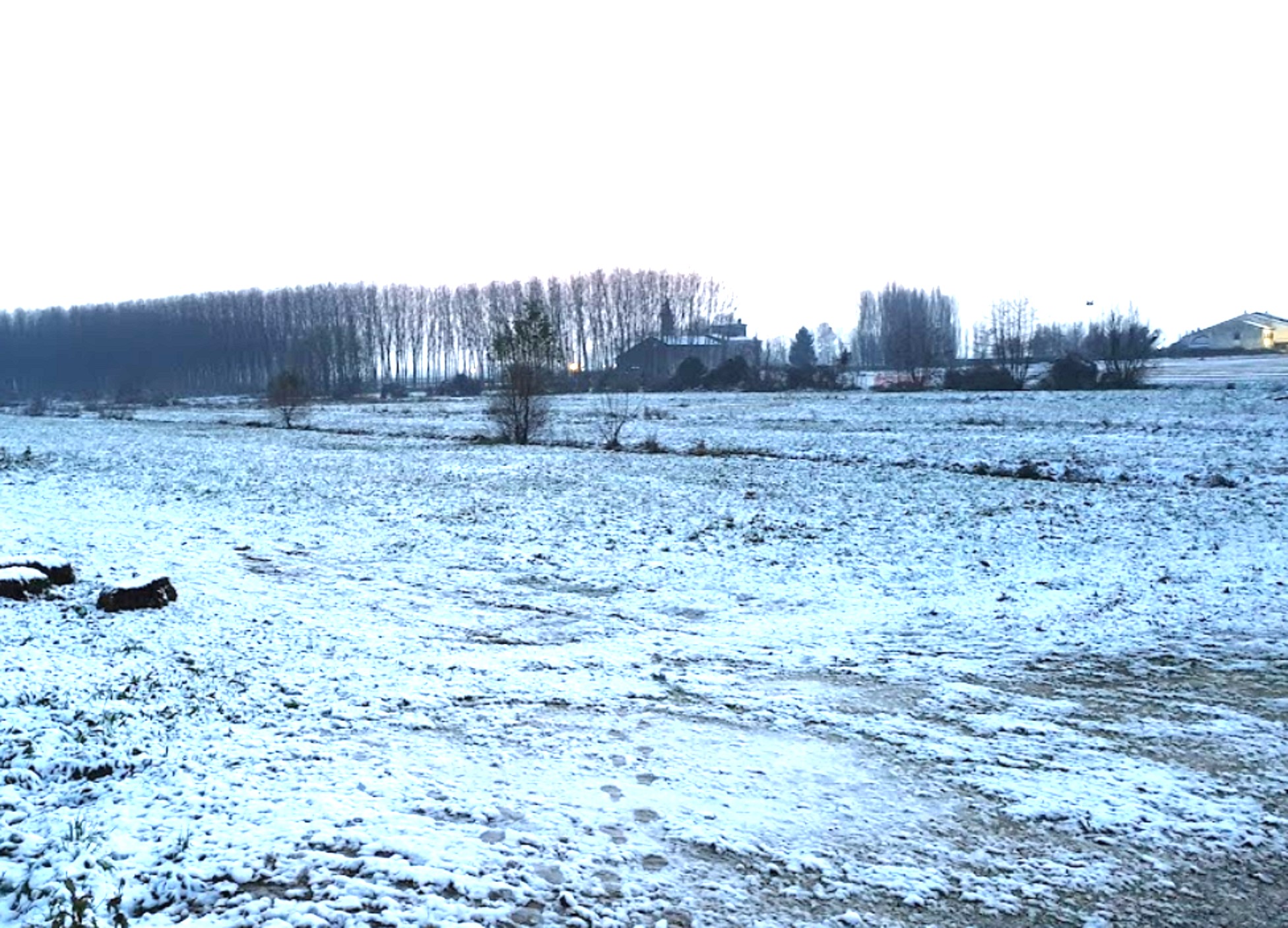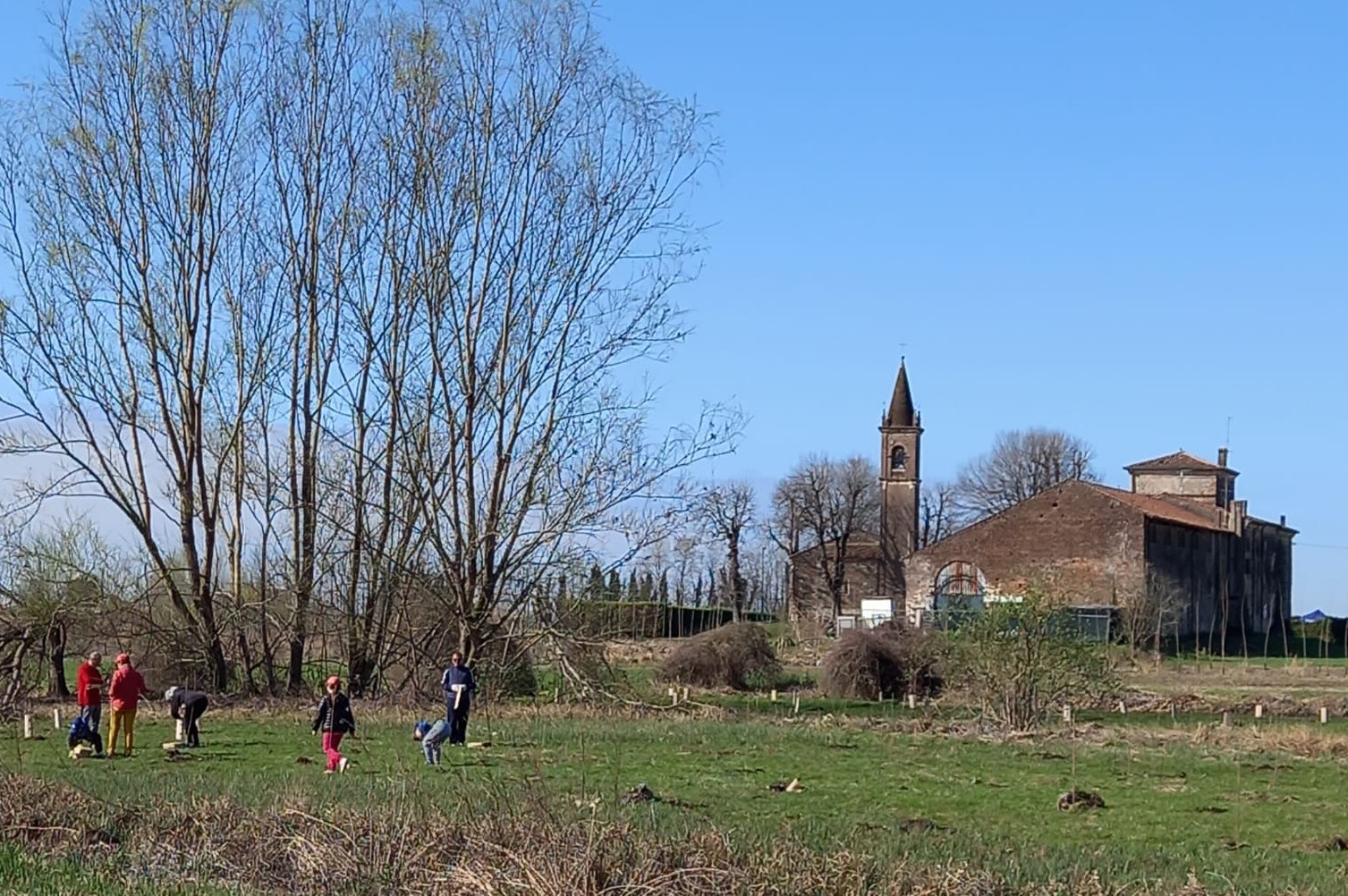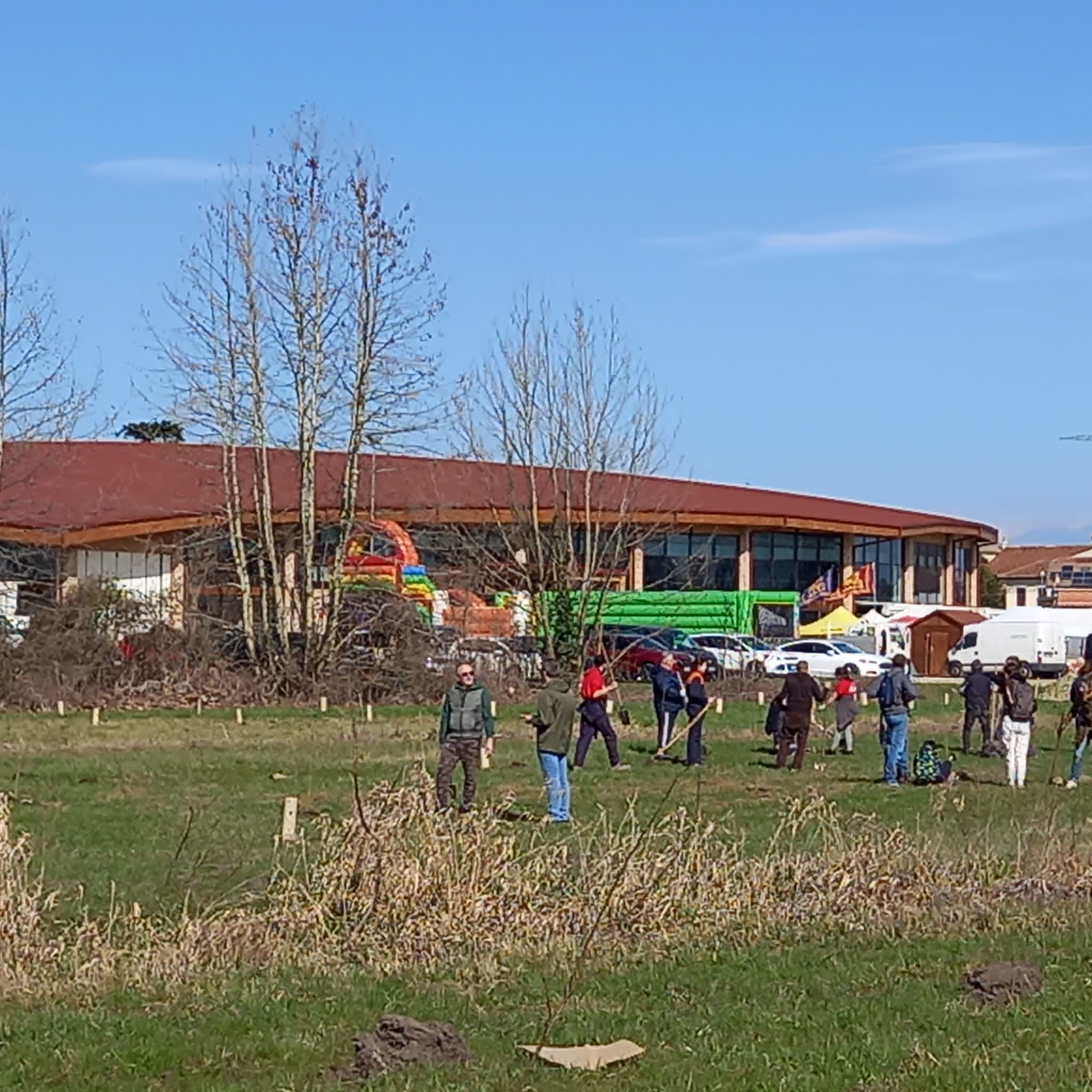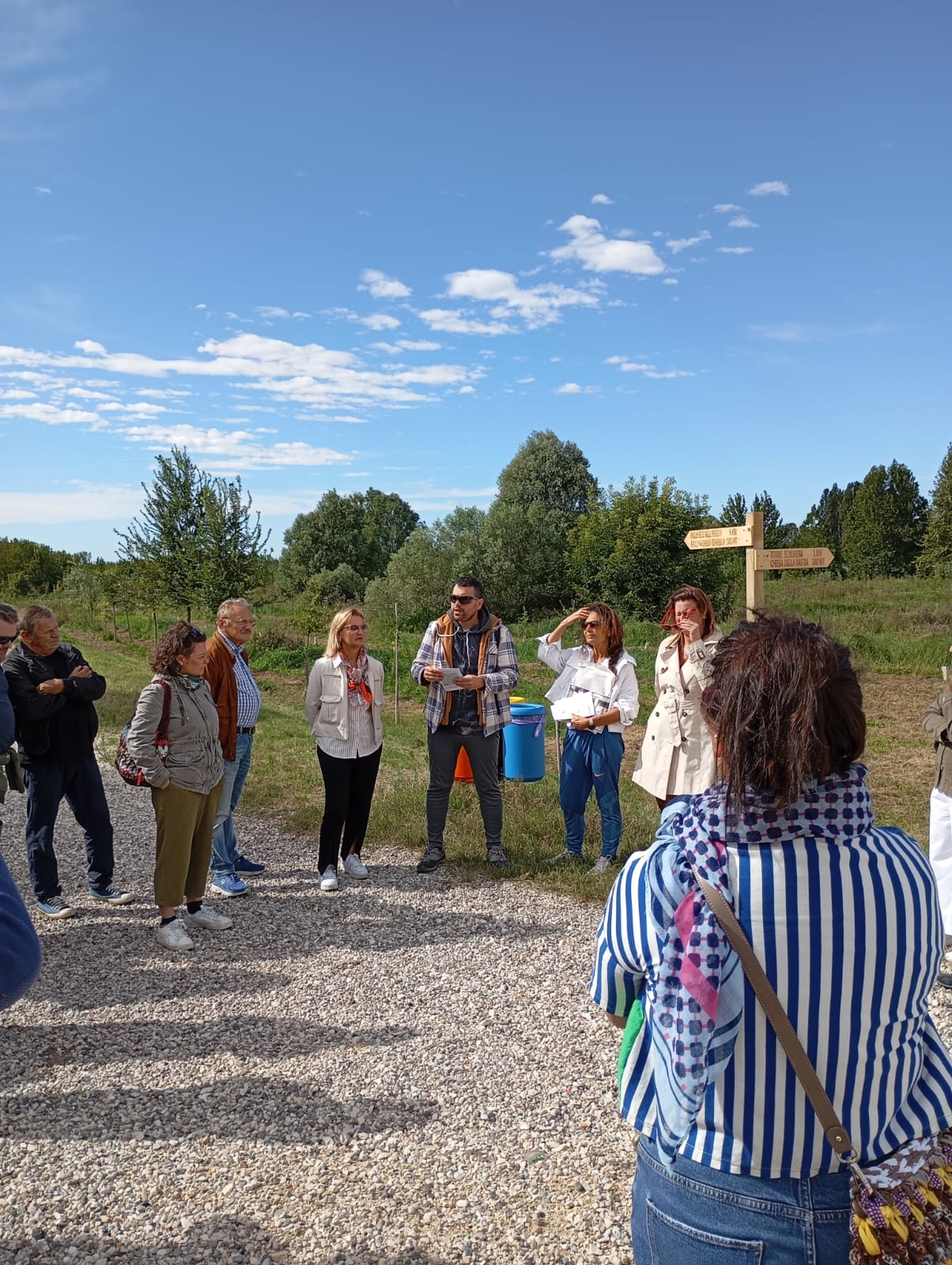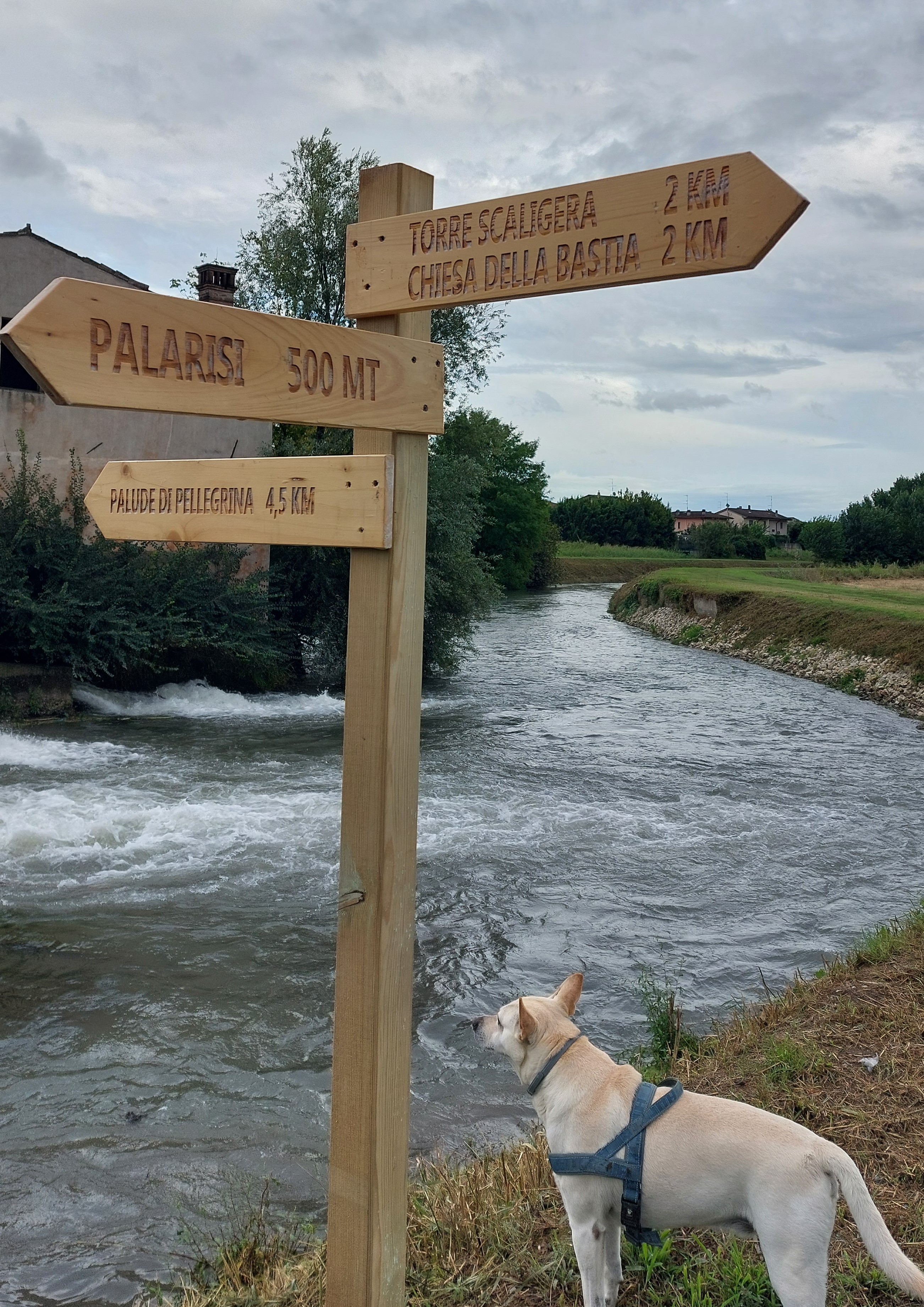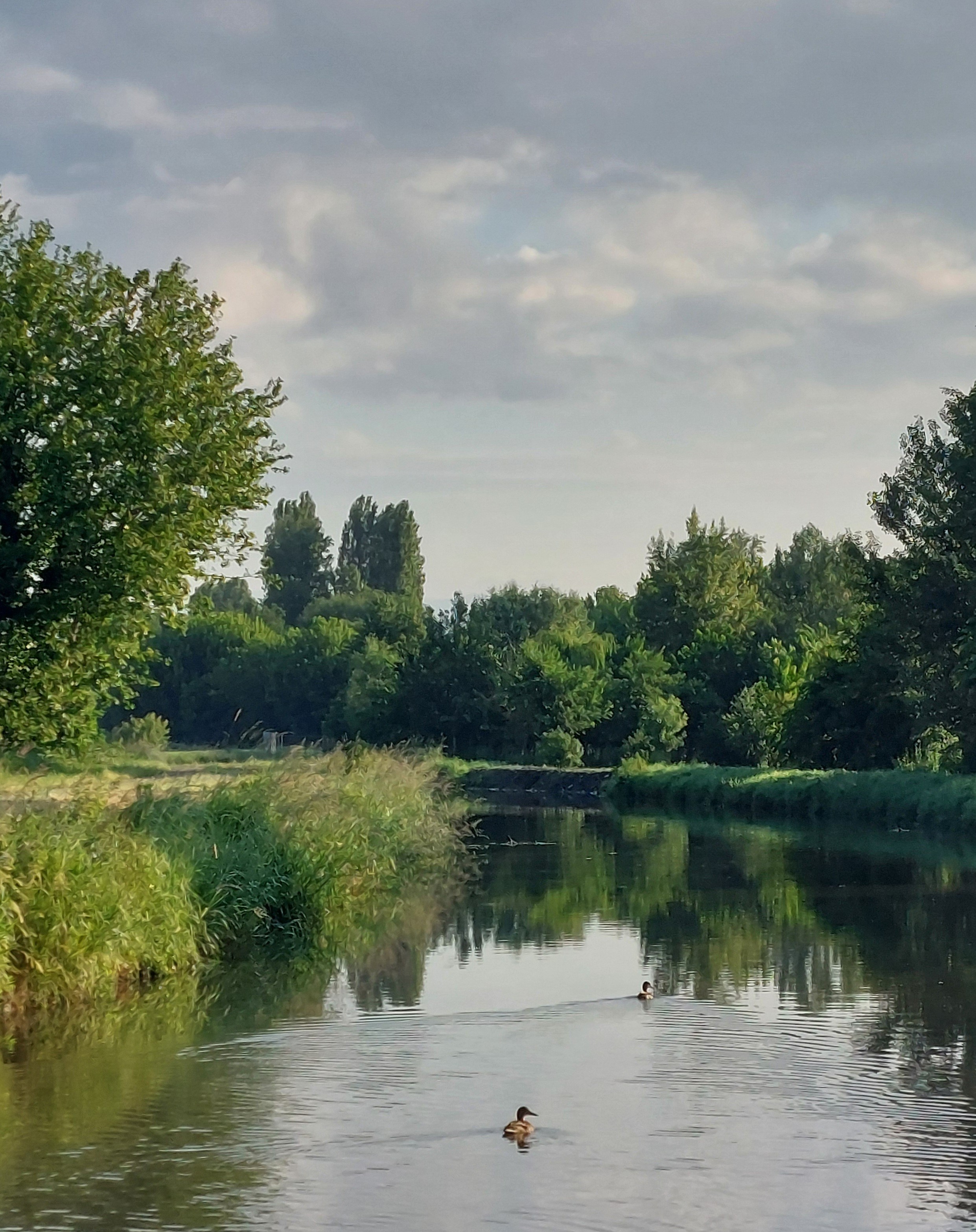Reconnecting with nature
An urban forest in town instead a desert
An urban forest in the center of the town to reconnect nature, people and architecture
In 2023, the municipal administration transformed this abandoned area in the center of the town into an urban forest connected to the river, the cycle path, the historic buildings and the exhibition centre. 494 planted plants, in partnership with Yves-Rocher Foundation, also involving local associations and volunteer citizens. In 2024, the valorization of the place was completed by creating a 6 km signposted pedestrian route that connects this planting with the most beautiful nearby places.
Italy
Local
Isola della Scala
It addresses urban-rural linkages
It refers to a physical transformation of the built environment (hard investment)
Yes
2024-09-15
No
No
No
As a representative of an organisation
The project has created a lowland urban forest in the center of the town of Isola della Scala (tr. Island of stair) where previously there was only an environmental, social and cultural desert, without biodiversity and unused by the inhabitants.
The historic center of Isola della Scala is characterized by the presence of a large rural space formed by the bend of the Tartaro river. But it was neither valorized nor frequented, even though on this urban stretch of the river there are: a cycle path, 2 15th century mills, a 12th century Romanesque church and the exhibition centre, located in the area named Parco del Riso (Rice Park) (Isola della Scala is an important town of italian rice production I.G.P.).
In 2023, the municipal administration transformed this abandoned area in the center of the town into an urban forest connected to the river, the cycle path, the historic buildings and the exhibition centre. 494 plants were planted as part of the Agri.bio.s.a. Project 2021/22 in partnership with Yves-Rocher Foundation, Co.ge.v. of Verona and A.ve.pro.bi., also involving local associations and volunteer citizens. The results pursued are: Environmental improvement, improvement of biodiversity, Improvement of the landscape and visual screen, Interception of dust and pollutants, Mitigation of noise pollution.
In 2024, the social, cultural and landscape enhancement of the place was completed by creating a 6 km signposted pedestrian route that connects the most beautiful sites in the country, all located in the immediate vicinity of the planting, such as the river, the 2 mills with their waterfalls, a medieval tower and a Romanesque church, with the aim of connecting the new natural ecosystem with people. The objective is for citizens to experience nature and the landscape and architectural beauties by regaining possession of public places and contact with nature, for the purposes of social inclusion and accessibility to traditional places and local beauties.
The historic center of Isola della Scala is characterized by the presence of a large rural space formed by the bend of the Tartaro river. But it was neither valorized nor frequented, even though on this urban stretch of the river there are: a cycle path, 2 15th century mills, a 12th century Romanesque church and the exhibition centre, located in the area named Parco del Riso (Rice Park) (Isola della Scala is an important town of italian rice production I.G.P.).
In 2023, the municipal administration transformed this abandoned area in the center of the town into an urban forest connected to the river, the cycle path, the historic buildings and the exhibition centre. 494 plants were planted as part of the Agri.bio.s.a. Project 2021/22 in partnership with Yves-Rocher Foundation, Co.ge.v. of Verona and A.ve.pro.bi., also involving local associations and volunteer citizens. The results pursued are: Environmental improvement, improvement of biodiversity, Improvement of the landscape and visual screen, Interception of dust and pollutants, Mitigation of noise pollution.
In 2024, the social, cultural and landscape enhancement of the place was completed by creating a 6 km signposted pedestrian route that connects the most beautiful sites in the country, all located in the immediate vicinity of the planting, such as the river, the 2 mills with their waterfalls, a medieval tower and a Romanesque church, with the aim of connecting the new natural ecosystem with people. The objective is for citizens to experience nature and the landscape and architectural beauties by regaining possession of public places and contact with nature, for the purposes of social inclusion and accessibility to traditional places and local beauties.
Improvement of biodiversity
Improvement of the landscape
Interception of dust and pollutants
Regaining possession of natural public places
Social inclusion and accessibility
The project converts a place in the city center without biodiversity, without beauty and without socialization, into a lowland urban forest that achieves the following objectives: Environmental improvement, Biodiversity improvement, Landscape and visual screen improvement, Interception of dust and pollutants and Mitigation of noise pollution.
Before the project this place was an environmental, social and cultural desert, devoid of biodiversity and unused by the inhabitants. But now the planting of 494 plants per 22000 square meters gives the town a green lung for the present and for future generations, regenerating the natural ecosystem and increasing the physical, psychophysical and social well-being of citizens.
Therefore, the sustainability carried out by this project concerns many aspects: the reduction of CO2, healthier air, the return of biodiversity of the flora and consequently of the fauna, a better way of living in contact with nature. Furthermore, the project has also made citizens more sensitive to green issues, has increased citizens' care towards the common good with voluntary works for environmental protection and has generated a healthier lifestyle because now people walk in nature and live and frequent this reborn place, where various outdoor events are also held.
Before the project this place was an environmental, social and cultural desert, devoid of biodiversity and unused by the inhabitants. But now the planting of 494 plants per 22000 square meters gives the town a green lung for the present and for future generations, regenerating the natural ecosystem and increasing the physical, psychophysical and social well-being of citizens.
Therefore, the sustainability carried out by this project concerns many aspects: the reduction of CO2, healthier air, the return of biodiversity of the flora and consequently of the fauna, a better way of living in contact with nature. Furthermore, the project has also made citizens more sensitive to green issues, has increased citizens' care towards the common good with voluntary works for environmental protection and has generated a healthier lifestyle because now people walk in nature and live and frequent this reborn place, where various outdoor events are also held.
The project enhanced the natural landscape, enhanced the architectural and historical beauties of the area and enhanced the beauty of the historic center, because the place is in contact with the historic center.
Previously the place was an abandoned agricultural area close to the historic centre, but now it has become an urban forest with 15 different species of native plants which increases the beauty of the place itself but also of the architectural beauties all bordering it: the river, the cycle path on the river, 2 15th century mills with their waterfalls, a 12th century Romanesque church and the exhibition center with contemporary architecture. To enhance the aesthetics of the place and make accessibility usable, a marked circular route was also created equipped with wooden tourist signs with directional arrows, to be done on foot, by bike or on horseback.
Now people are starting to love and use this place because it has become beautiful, thanks to the trees that have improved the landscape and everything around it.
Previously the place was an abandoned agricultural area close to the historic centre, but now it has become an urban forest with 15 different species of native plants which increases the beauty of the place itself but also of the architectural beauties all bordering it: the river, the cycle path on the river, 2 15th century mills with their waterfalls, a 12th century Romanesque church and the exhibition center with contemporary architecture. To enhance the aesthetics of the place and make accessibility usable, a marked circular route was also created equipped with wooden tourist signs with directional arrows, to be done on foot, by bike or on horseback.
Now people are starting to love and use this place because it has become beautiful, thanks to the trees that have improved the landscape and everything around it.
The reforestation and the creation of a route made it possible for the population to use a public place that was not frequented before and thus to come into contact with nature and the local beauties located around there (a few hundred meters), because this project made it possible not only to connect the historic center to the urban forest but also to reach and enjoy the historic buildings and natural beauties located in the immediate vicinity: a cycle path, 2 15th century mills, a 12th century Romanesque church and the fair centre.
Now visitors to the exhibition center can take a walk to admire the local beauty and citizens can find a renaturalised place just a stone's throw from the center where they can meet, live in contact with nature and take walks in the open air on equipped paths.
The effect on social inclusion generated by this project was immediately evident with the days dedicated to planting. In fact, there were many citizens, families with children and local associations who volunteered to plant the plants. The children gave their names to the plants, planted them and held educational workshops. Now schools come to visit the forest, to learn about the regeneration of the natural ecosystem and to carry out maintenance together with local associations.
Now visitors to the exhibition center can take a walk to admire the local beauty and citizens can find a renaturalised place just a stone's throw from the center where they can meet, live in contact with nature and take walks in the open air on equipped paths.
The effect on social inclusion generated by this project was immediately evident with the days dedicated to planting. In fact, there were many citizens, families with children and local associations who volunteered to plant the plants. The children gave their names to the plants, planted them and held educational workshops. Now schools come to visit the forest, to learn about the regeneration of the natural ecosystem and to carry out maintenance together with local associations.
The project saw the involvement of civil society right from its conception and throughout its implementation. Given that the municipal administration wanted to enhance the area with a project that included planting, some local environmental associations took action to find a way to find partners to carry out this project. This is how reforestation became part of the project called Agri.bio.s.a. 2021/2022 (Agriculture for Biodiversity and Environmental Sustainability) in partnership with Yves-Rocher Foundation, Co.ge.v. (Green Management Cooperative soc. coop. a R.L.) of Verona and A.ve.pro.bi. (Venetian Association of Organic and Biodynamic Producers).
Furthermore, during the days dedicated to planting, there were many citizens, families with children and local associations who participated as volunteers to plant the plants (in total about a hundred people). In those days the children gave their names to the plants, planted them and held educational workshops.
Now schools come to visit the forest, to learn about the regeneration of the natural ecosystem and to carry out maintenance together with local associations.
The creation of the route marked with wooden directional signs was also proposed by the local associations themselves, who also actively contributed to helping with the creation and placement of the signs themselves.
Citizens now use the place to reconnect with nature and walk in the natural beauty.
Furthermore, during the days dedicated to planting, there were many citizens, families with children and local associations who participated as volunteers to plant the plants (in total about a hundred people). In those days the children gave their names to the plants, planted them and held educational workshops.
Now schools come to visit the forest, to learn about the regeneration of the natural ecosystem and to carry out maintenance together with local associations.
The creation of the route marked with wooden directional signs was also proposed by the local associations themselves, who also actively contributed to helping with the creation and placement of the signs themselves.
Citizens now use the place to reconnect with nature and walk in the natural beauty.
The planning and implementation of the planting involved 4 different levels: local associations, the Municipality, regional organic farming bodies and a French foundation (Yves-Rocher Foundation).
The associations proposed the project idea, helped find regional and French partners and physically contributed to the planting work.
The Municipality carried out the design by collaborating with an important local entity (Co.ge.v.) expert in environmental projects.
At a regional level the reforestation project has become part of the Agri.bio.s.a. Project. 2021/2022 (Agriculture for Biodiversity and Environmental Sustainability) in partnership with the Yves-Rocher Foundation, Co.ge.v. (Cooperativa Gestion Verde soc. coop. a R.L.) of Verona and A.ve.pro.bi. (Venetian Association of organic and biodynamic producers).
The partnership with the Yves-Rocher Foundation is a source of pride for the European scope of the project.
Even for the design and construction of the signposted route, the proposal always came from the local associations, who helped the designers to identify the route and the areas where to place the signs and finally also helped to physically install the signage.
The added values of the involvement of these partners were two. 1) the creation of the urban forest was made possible thanks to the contribution of civil society. 2) this local project has truly become part of the national and European scope of the green deal.
The associations proposed the project idea, helped find regional and French partners and physically contributed to the planting work.
The Municipality carried out the design by collaborating with an important local entity (Co.ge.v.) expert in environmental projects.
At a regional level the reforestation project has become part of the Agri.bio.s.a. Project. 2021/2022 (Agriculture for Biodiversity and Environmental Sustainability) in partnership with the Yves-Rocher Foundation, Co.ge.v. (Cooperativa Gestion Verde soc. coop. a R.L.) of Verona and A.ve.pro.bi. (Venetian Association of organic and biodynamic producers).
The partnership with the Yves-Rocher Foundation is a source of pride for the European scope of the project.
Even for the design and construction of the signposted route, the proposal always came from the local associations, who helped the designers to identify the route and the areas where to place the signs and finally also helped to physically install the signage.
The added values of the involvement of these partners were two. 1) the creation of the urban forest was made possible thanks to the contribution of civil society. 2) this local project has truly become part of the national and European scope of the green deal.
The Municipality's planning involved a forestry technician from Co.ge.v. to create planting that was as efficient and rigorous as possible to achieve the aim of increasing biodiversity and regenerating the natural ecosystem. In fact, the project involved very precise spacing between the plants and the use of 15 native species planted alternately in a very specific order so that the plants could grow harmoniously.
Inclusion in the Agri.bio.s.a. project allowed the use of native and certified species and the use of biodegradable mulch, supports and shelters to respect the environment.
The involvement of local associations meant that the project was the project of the entire local community and a celebration for citizens and families.
Inclusion in the Agri.bio.s.a. project allowed the use of native and certified species and the use of biodegradable mulch, supports and shelters to respect the environment.
The involvement of local associations meant that the project was the project of the entire local community and a celebration for citizens and families.
The innovative character of this planting was that of having created an urban forest instead of a simple city park, so that the area could be renaturalized by increasing biodiversity. But at the same time citizens can still experience it and get the natural benefits.
Furthermore, it is rare for a municipality to do this type of planting with 15 different species of plants arranged in a very specific order. It is a practice that is usually done by private individuals for productive and economic purposes, but in this case there is the awareness that the forest will never be eliminated because it was created for the well-being of the environment and citizens. In fact, the subsequent creation of the signposted route that connects the forest with the local beauties establishes the permanent nature of the project.
Furthermore, it is rare for a municipality to do this type of planting with 15 different species of plants arranged in a very specific order. It is a practice that is usually done by private individuals for productive and economic purposes, but in this case there is the awareness that the forest will never be eliminated because it was created for the well-being of the environment and citizens. In fact, the subsequent creation of the signposted route that connects the forest with the local beauties establishes the permanent nature of the project.
The project used this methodology: involvement of local associations on the purpose of the project, identification of the municipal area, planning of reforestation with the involvement of the forestry technician to optimize the result, participation in the Agri.bio.s.a. project, implementation of planting involving local associations and citizens, valorization of the project with the route indicated always in partnership with local associations.
Every aspect of this project is replicable anywhere else because the purpose and methodology are universal. The inspiring principle is in fact to enhance unused places by transforming them into biodynamic natural ecosystems that interact and beautify nearby points of interest such as historic buildings or natural beauty.
The involvement of local associations and citizens is also replicable and indeed indispensable to make people feel an active part in the improvement of their country, so that they take care of the common good and thus increase social ethics and civic and environmental education.
In fact, the municipal administration is taking an interest in valorizing other areas of municipal property in this way.
The involvement of local associations and citizens is also replicable and indeed indispensable to make people feel an active part in the improvement of their country, so that they take care of the common good and thus increase social ethics and civic and environmental education.
In fact, the municipal administration is taking an interest in valorizing other areas of municipal property in this way.
The project addresses the global challenge of reducing CO2 emissions into the atmosphere, reducing pollution, increasing biodiversity and allowing citizens to live in a more beautiful natural environment. This is also and above all possible starting from local situations, because if each country and each community in its own small way does its part in this direction, many small projects put together generate a great change both in collective well-being and in people's participation in the positive change of society.
All the plants survived and grow and new plants arose spontaneously. This is a great success because it is a concrete example of how biodiversity generates life. Now we are sure that birds and animals will also benefit from it.
The place was previously ugly to look at, but now it is beautiful and the citizens frequent it and live it, alone, with their dogs, with their children. Thanks to the signposted route, people now walk more and can appreciate the landscape and the architectural and natural beauty of the area.
Tourists and visitors to the fair area now have one more attraction to see and are more incentivized to visit the country, thanks also to the signposted route. This will also encourage cycle tourism and slow tourism.
The place was previously ugly to look at, but now it is beautiful and the citizens frequent it and live it, alone, with their dogs, with their children. Thanks to the signposted route, people now walk more and can appreciate the landscape and the architectural and natural beauty of the area.
Tourists and visitors to the fair area now have one more attraction to see and are more incentivized to visit the country, thanks also to the signposted route. This will also encourage cycle tourism and slow tourism.

